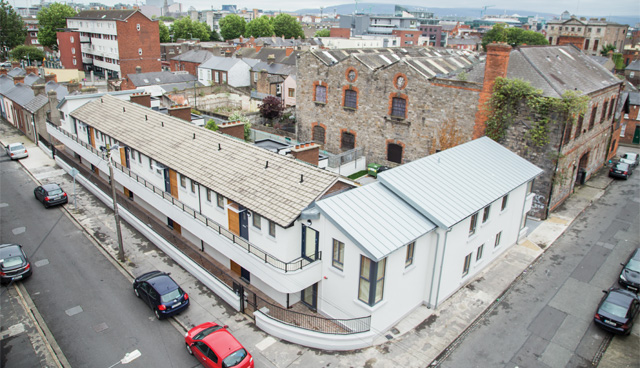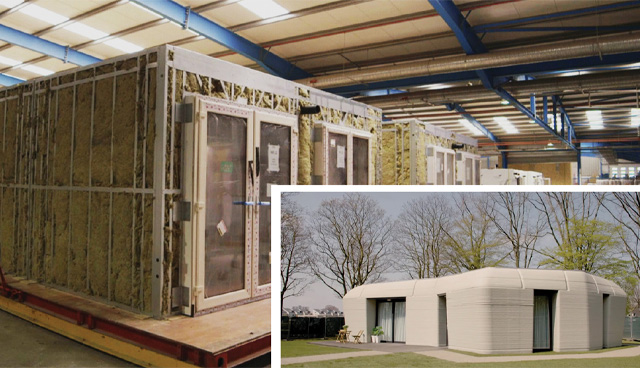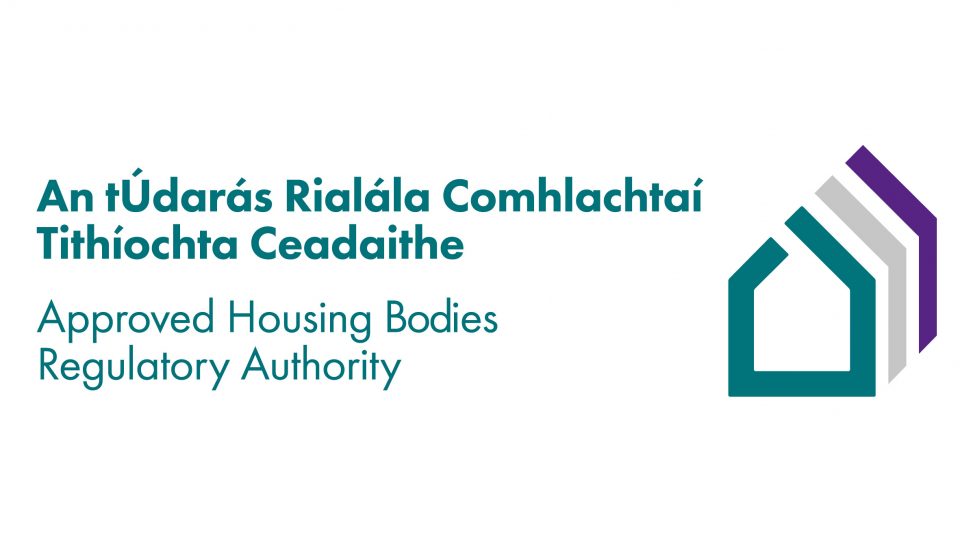
Supply is key in post-pandemic housing
1st June 2021
Stormont Housing Minister Deirdre Hargey MLA: Housing system revitalisation
1st June 2021Housing for All: Opportunities for social and affordable housing

Innovation in housing delivery: Off-site manufactured homes in Ireland and 3D printed rented home in the Netherlands.
Ensuring housing affordability, increased supply, access for key target groups and enhanced quality of all housing should be the overarching focus in the new proposed new government Housing for All policy document, writes Donal McManus, CEO at the Irish Council for Social Housing (ICSH).
A national plan that has strategic direction and objectives for the next five-to-10 years for the housing sector, as well dealing with the ongoing operational challenges has a real opportunity to create a more stable and balanced housing system for all and make an impact on the housing crisis.
Housing associations’ contribution
Non-profit housing associations and members of the ICSH, also known as approved housing bodies (AHBs), have an important role in contributing to Housing for All, although it can’t solve alone all the housing challenges that we encounter. AHBs in the housing association sector own and manage over 40,000 social rented homes and also adds at least another 10 per cent to its housing stock each year with new delivery.
In addition, the sector is playing a central role in the delivery of the new cost rental housing targeted at those households with moderate incomes who may not qualify for social housing, or alternatively are unable to access an affordable home in the private sector to either buy or rent. This is particularly geared to those households between the fourth- and eighth-income deciles in CSO statistics.
Even though the cost rental programme was only established in recent months and despite Covid-19 restrictions, delivery on a number of approved cost rental projects will be completed by housing associations in the coming months and throughout 2021. A multiannual programme for cost rental will ensure that there is a structured programme for delivery and not just a one-off pilot.
The housing association sector comprises a smaller number of AHBs who provide social rented housing at scale, usually general needs and family housing. Their expansion has been supported in part, particularly by the successful Capital Advance Leasing Facility (CALF) and the Payment and Availability (P&A) scheme, which has yielded significant increased delivery since 2015.
Working in partnership with local authorities to meet their delivery targets, these new homes have provided additional choice for people on the local authority waiting lists. Other housing associations may focus less on larger scale developments, and on more targeted housing and related solutions for the homeless, older people, people with disabilities, single people, families with mortagage difficulties and new migrants.
Many of these projects also incorporate meeting wider objectives including reactivating towns and villages, reintegrating and supporting homeless households back into society such as with Housing First, preventing older people from entering nursing homes and care institutions prematurely, and enabling people with disabilities to live in their local community.
The Capital Assistance Scheme (CAS) as a funding mechanism has been adaptable to meet changing demographic housing needs of vulnerable households over the last 40 years. Housing associations operating in the sector for almost 150 years have also focused on the housing management of homes, so the quality of housing is maintained to a high standard for many generations.
“In tandem with the increased housing delivery required across all tenures, additional capacity in the construction industry will be an essential prerequisite.”
Progress has been made with increased delivery of social housing since 2016 by local authorities and housing associations from a low level. The housing association sector had its great leap forward between 2014 and 2019, when output rose from 400 to over 4,000 homes during this period. Alongside this, the new statutory regulation for AHBs, and with tenants through the RTB in recent years are key assurances for investment in the sector in the next decade.
Therefore, there is a much stronger base and capacity in place in the sector in 2021 to scale up for consistent delivery over the next decade. There is an increased role for social housing over the next decade, starting off with Programme for Government (PFG) commitments, and National Development Plan. Therefore, it is not unreasonable to envisage the scale of social rented housing under management increasing from the current level of approximately 185,000 homes to circa 300,000 homes by the end of the decade in 2030. This would represent an increase of around one-third in the total social housing stock over the next decade to around 15 per cent of the housing stock, closer the EU average.
This would help to address the deficit in social housing as social infrastructure that has emerged over a long period and became a systemic problem in the housing sector, where due to its small scale, it was both a limited safety net and springboard for families. The practical benefit of having a larger social housing stock in the region of 300,000 homes owned and managed by local authorities and housing associations, is it would allow for an increased number of casual vacancies. For example, a 5 per cent turnover per year of lettings in an expanded social housing stock of 300,000 homes would accommodate up to 15,000 households coming off the waiting list before any new housing is constructed. This would help with the objective in reducing waiting times for housing applicants and waiting lists could represent an ongoing frictional level of demand for social housing.
Land and delivery methods
There are two key areas which are the foundations to increased delivery of new affordable homes in the housing sector over the next 10 years, whether this be private, affordable, or social housing. Firstly, this should include continuous access to affordable sites, and increased capacity in the construction industry to provide additional homes as part of increased annual delivery in averaging 33,000 new homes per year to meet forecasted demand.
Reducing the cost of sites will have a significant impact on the ability to contribute to making housing affordable for owners, including first time buyers, and housing associations providing cost rental and social housing. With the expanding range of new affordable housing schemes, it is also important there is not displacement of land for social housing purposes as occurred a decade ago. The Land Development Agency should be a key strategic role here in coordinating land assembly, including mobilising inactive land in public sector ownership, to cater for the various tenures and specific needs.
In tandem with the increased housing delivery required across all tenures, additional capacity in the construction industry will be an essential prerequisite. As well as increased apprenticeships and workers in the industry, Housing for All should also focus on the innovation, digitalisation, and off-site manufacturing solutions to accelerate supply at scale.
Although there have been some developments in the social housing sector to date in Ireland, particularly with modular type housing, more work should be enabled by government and its agencies to be undertaken in this area.
For instance, off-site manufacturing can help to spread risk from a limited number of delivery methods such as traditional construction. Other innovations, such as 3D printed houses should be examined to establish whether this can deliver housing at greater scale and in a timely manner. The use of off-site manufacturing is increasing throughout the EU. Using manufacturing methods such as shipbuilding companies in Scandinavia to provide new off-site housing is now becoming familiar and further innovation in Ireland should be supported.
Housing investment
Obviously, a key driver in the provision of new housing is sustainable investment, both public and private, in different formats. Housing associations, since 2011 have used both state capital and revenue/loan finance to provide social housing. Public investment by the State is a key component to contribute in delivering social and affordable housing and there is not significant leakage of public investment. In addition, the private construction sector plays a key role in constructing homes at scale including with increased joint ventures with housing associations.
There is also a distinct role for targeted long-term private investment in social housing, such as ethical funds, who invest using Environmental, Social, and Governance (ESG) indicators. This includes instances where a housing association manages properties over 30 or 40 years, for example, from a pension fund. At the end of this period, the model enables properties to be returned to the State vis-à-vis the transfer of ownership to the housing association.
There is often confusion with definitions and role of different private sector funds, which are not homogeneous, and which are rapidly mutating in the private financial sector. However, long-term ethical funds are a different character from those investors and shareholders who may invest in property for reason of extracting short value and capital gains. This is similar to the speculative property investment model that has occurred in major cities throughout the world whether it be in Dublin, New York, Amsterdam or Hong Kong.
In contrast, the public interest mission of social and affordable housing provided by non-profit regulated housing associations would be more directly aligned with long-term investment by ethical funds in providing stable predictable returns.
Existing and new stock
While Housing for All will likely have a strong focus on increased delivery for new households, with associated infrastructure and planning interventions required, there is also a need to focus on the current housing stock and particularly those living in poor quality or inadequate housing, so that they are not left behind by the strategy.
“There is often confusion with definitions and role of different private sector funds, which are not homogeneous, and which are rapidly mutating in the private financial sector. However, long-term ethical funds are a different character from those investors and shareholders who may invest in property for reason of extracting short value and capital gains.”
Regeneration of older social housing stock is one particular area where housing associations have played, and continue to play a role in assisting local authorities in improving the quality of flats and bringing homes up to a modern standard. The Climate Action Plan objectives, including achieving zero carbon emissions by 2050, will be a dominant issue for both property owners and tenants.
A significant investment plan in place, together with new payment models, will be required initially targeting older, less energy efficient stock. The social housing sector can play its part in planning for the reduced level of embodied carbon in developing of new housing, emphasising the reduction in tonnes of CO2 it can contribute to climate action plan targets. Also, in considering housing delivery, the types of new homes along with lifestyle choices post-Covid, there are significantly greater opportunities for a new Housing for All policy to address shrinkage in many towns and villages throughout the country.
Many housing initiatives or policy objectives have a direct spill over effect into other policy areas. For example, the level of owner occupation has an impact the welfare of people who are of pension age and also family formation age. Alongside this, social and affordable housing has a wide range of social, health, educational and economic benefits both for the individual, the local community and wider society. AHBs in the housing association sector have a long term interest in investing in housing and supporting local communities whilst meeting emerging demographic needs. In the next decade the sector is keen to ensure more social and affordable housing options.
For more information contact:
Donal McManus
CEO, Irish Council for Social Housing
E: donal@icsh.ie
W: www.icsh.ie









